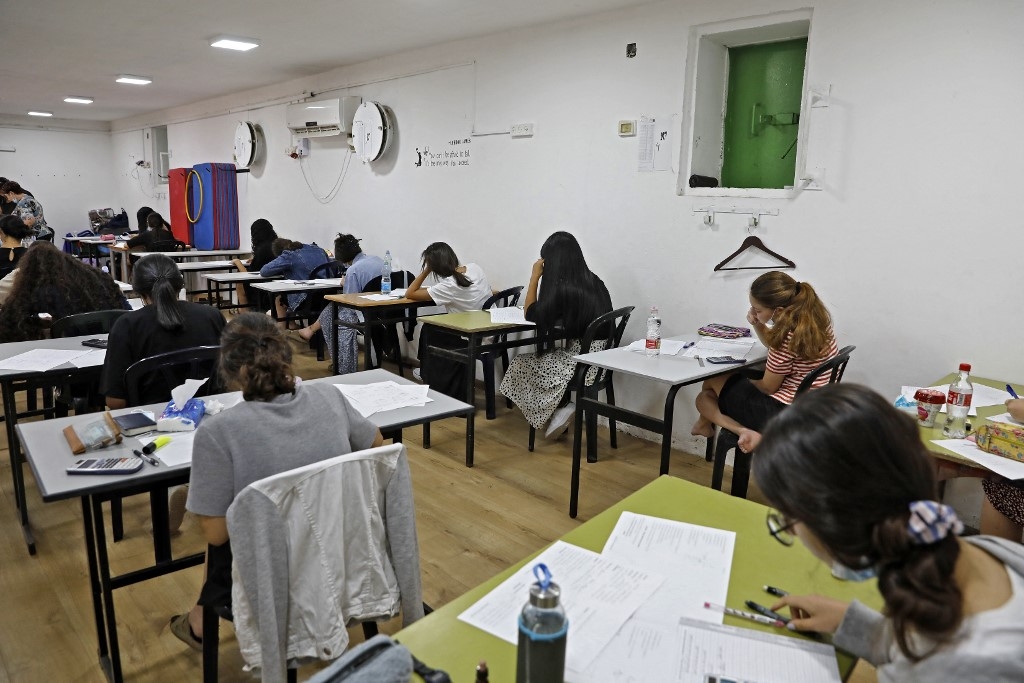Education and income gaps widening between Israel's different Jewish groups, says report

The gap in academic performance and education level has widened between Israel’s Ashkenazi and Mizrahi Jewish communities, according to a new study.
Ashkenazi refers to Jews from European countries and North America who migrated to British occupied Palestine and later to Israel; while Mizrahis are the Jews who settled in Israel from Arab and Muslim countries in the 1950s and 60s, mainly Iraq, Yemen and Morocco.
The study, reported by Haaretz on Friday, revealed that in terms of financial and educational achievement, third-generation Mizrahis have done worse than their parents' generation.
The study shatters a common belief that the living standards of Mizrahis - who suffered widespread racism and abuse when they reached Israel after 1948 - have been improving.
The report said Mizrahi grandparents' country of origin was still important in deciding on their life outcomes.
New MEE newsletter: Jerusalem Dispatch
Sign up to get the latest insights and analysis on Israel-Palestine, alongside Turkey Unpacked and other MEE newsletters
The study gathered data from Israel’s National Insurance Institute, the income tax department, and the population registry of approximately 1.3 million people between the ages of 25 and 43 years old, as well as data from Israel’s higher education institutions.
Ashkenazi Jews and those of mixed descent continued to top the chart in terms of income, followed by Mizrahi men, and at the bottom of the ladder were Mizrahi women.
Among second-generation immigrants, 56 percent of Ashkenazi women had an academic degree, compared with 41 percent of Mizrahi women. That 15 percent gap rose to 17.6 percent among third-generation Ashkenazi and Mizrahi women.
The same applied for Ashkenazi and Mizrahi men, but the gap in education was even higher. The percentage of Mizrahi men acquiring an academic degree was almost the same in the second and third generation, 27.4 percent in the second and 27.2 percent in the third.
On the other hand, the percentage of Ashkenazi men getting into higher education increased from 43 to 46.3 percent in the second and third generation, respectively.
The study concluded that in general, women are more educated than men in Israel, regardless of their ethnic background.
It also found a wide gap in ethnic representations of students in acclaimed universities of the country, such as the Hebrew University of Jerusalem, Tel Aviv University, The Weizmann Institute of Science and the Israel Institute of Technology (the Technion). In these institutions, only 10 percent of male students were from a Mizrahi background while 20 percent of men were Ashkenzis. While in other colleges the numbers were 40 and 60 percent, respectively.
In terms of income, Mizrahi Jews had a slightly higher income at the age of 25 than their Ashkenazi peers, due to less years spent in education and an early entry into the job market. But this advantage ceased around the age of 30, when Ashkenazis started to record higher income than Mizrahis, which reached a 20 percent gap at the age of 43.
The gap in income between Ashkenazis and Mizrahis was adamant in both second and third generations.
According to Yossi Dahan of the Academic Center for Law and Business in Tel Aviv, the study’s findings "document strong trends of inequality, indicating a link between economic means, and in part also origins, and educational achievement," he told Haaretz.
Middle East Eye delivers independent and unrivalled coverage and analysis of the Middle East, North Africa and beyond. To learn more about republishing this content and the associated fees, please fill out this form. More about MEE can be found here.





